This month we are still looking at buildings that have changed or disappeared.
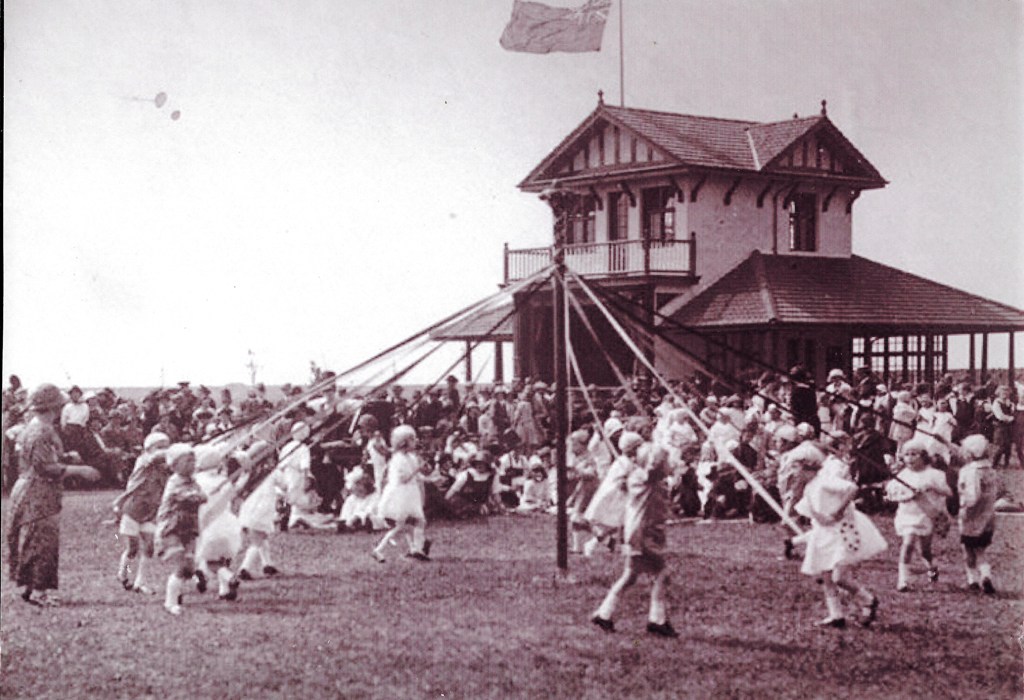
The photo above was taken in 1935 and the John Gray Centre annotation states that “Traditionally maypole dancing was done by women, but later became popular with children. Each child holds one of the coloured ribbons and circles the maypole with a hopping, skipping step. Some of the children dance in one direction while the others dance the opposite way around the pole”. Looking at the crowds watching this event, this celebration of May Day was obviously very popular. The pavilion aka Winterfield Pagoda was originally built to house Pierrot shows and you can read more about Scottish Pierrots here. In the 1960s, the pavilion was converted into a toilet/shower/storage facility for the caravan park. The photo below was featured on the Resources Pages in 2019 (scroll down to June 2019.)
The park was used for many purposes in the 20th century, such as sheepdog trials, shows and circuses. The pavilion deteriorated and was demolished in 2016. You can see 15 photos of Winterfield Park and the now dilapidated pavilion here. Today, there is no trace of the pavilion but the park remains as a space for walking and sport, and admiring the wild flowers, past their best in the photo below.
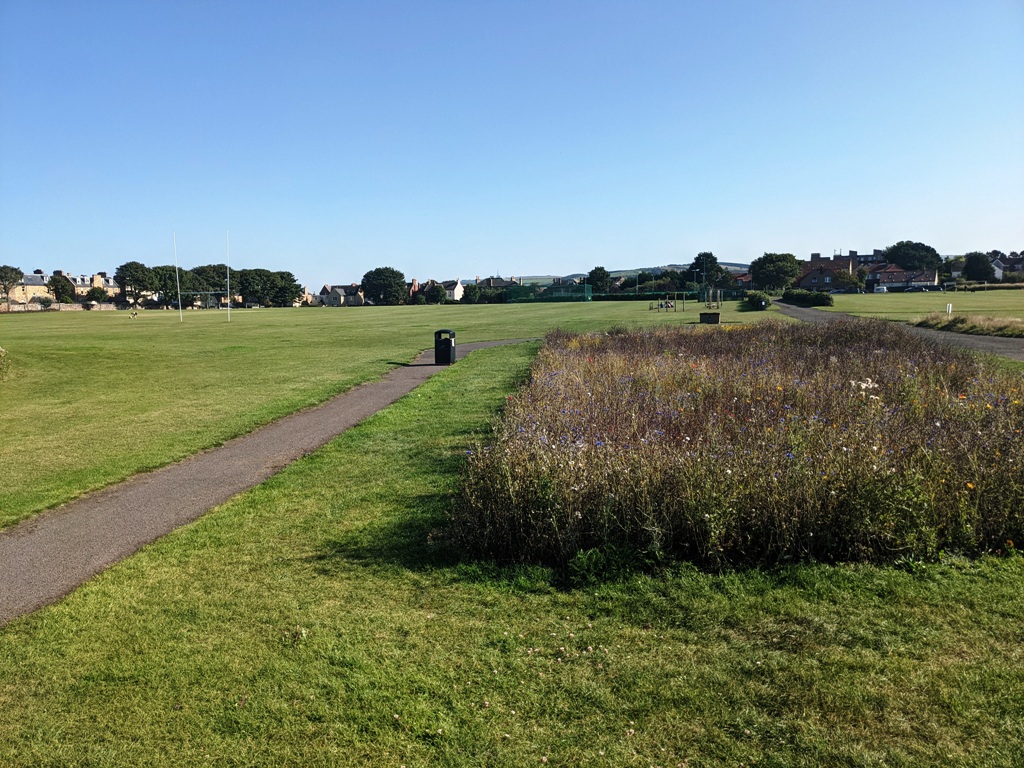
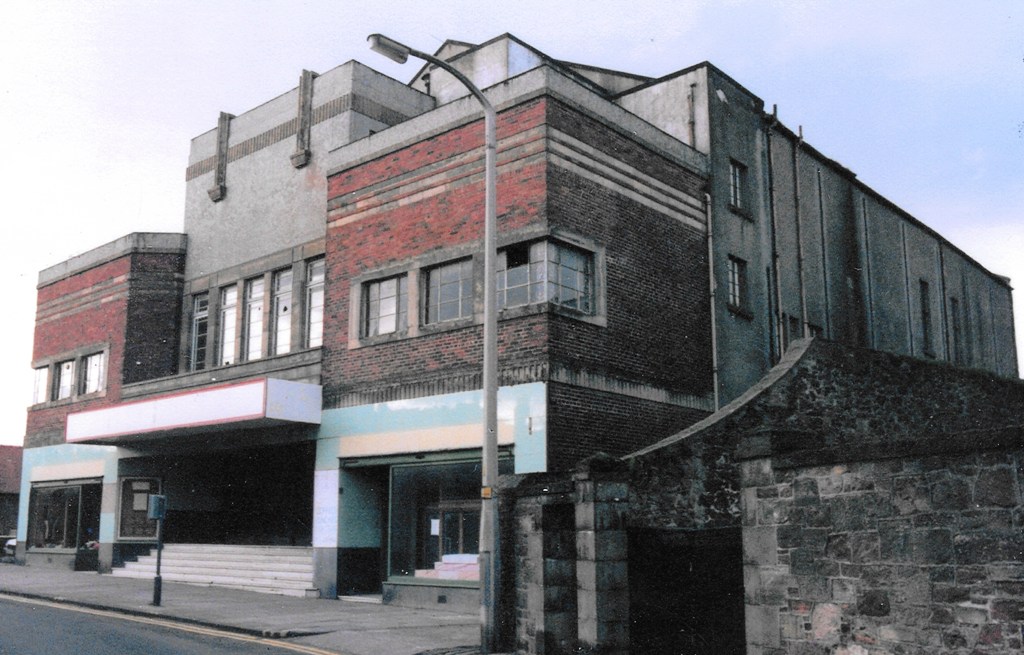
The photo above shows the Playhouse Picture House/Cinema. The Playhouse was built in 1937 and is featured in Jim Herring’s book Dunbar in the 1950s. It was much bigger than people expected it to be and bandleader George “Toe” Gillan stated that the people who were responsible for estimating the size of the cinema came to Dunbar in the summertime. George Gillan continued “Now Dunbar was packed to the gunnels with visitors in the summertime and it was estimated that the population could have doubled. So they decided to build this big cinema, and people often wondered why Dunbar got a big, palatial-looking picture house, which they thought might have been more suitable for a much bigger town”.
The photo above shows the inside of the building and George Gillan’s term palatial is not far off the mark. The Art Deco design can be seen on the ceiling, the lights and beside the screen. You can read more about Art Deco cinemas here. The heyday of the Playhouse was in the 1950s and 1960s when popular pictures/films had queues stretching down Countess Road on Saturday evenings. The audiences declined in the 1970s and the building became too expensive to repair. It was demolished in 1988 and replaced by a medical centre.
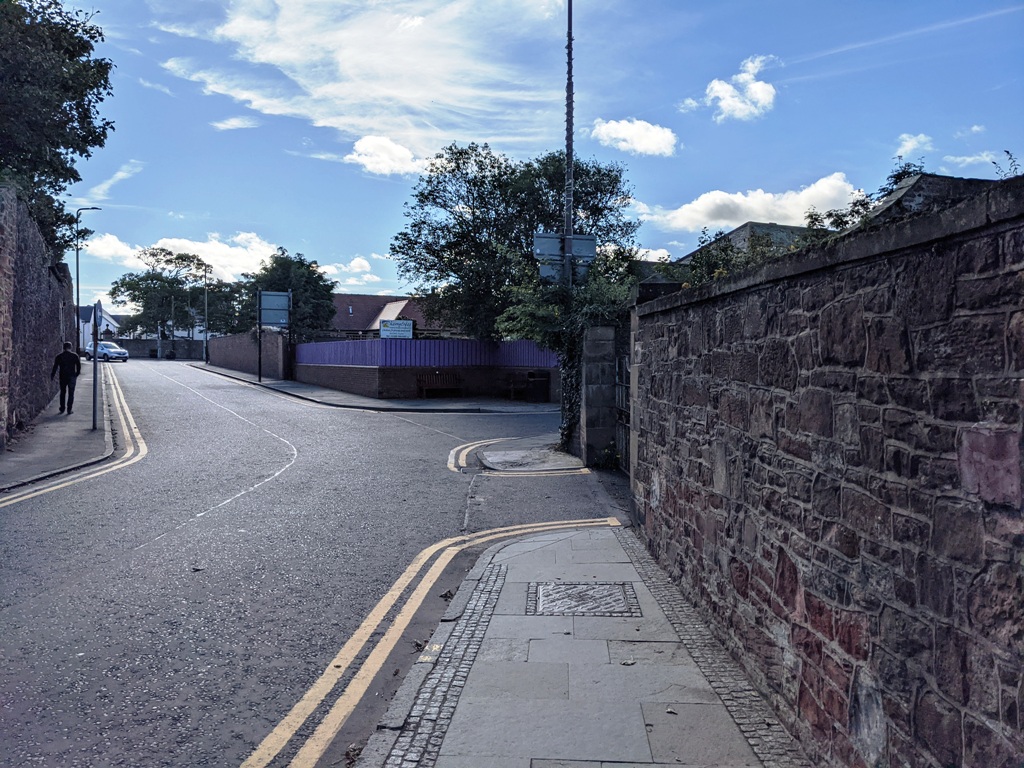
The site of the old cinema – seen above – is now home to the Cherrytrees Nursery for children. The picture house is gone as are the adjacent buildings – a former shoe shop owned by Frank Shields and the Birrell’s sweetie shop. You can see a 1952 video of Birrell’s sweetie factory here. In both photos, the sturdy stone wall is still there.

The photo above shows what was once Stark’s garage, with the offices next to it. This garage was well-known for its Roto-Moto facility, whereby cars could drive into the garage for petrol and the car would be turned around to face the high street on a turntable, thus allowing the driver to avoid reversing. After asking for comments on the photo, Jim Herring could not find anyone who could identify the person holding the petrol pump. As the the two cars seen in the photo, the car next to the attendant may have been a Hillman Super Minx and the car to the right a Mini Van. At this time – 1950s/1960s – there were no service stations/garages as we know them now, whose sole purpose is to sell petrol. Also, there was no such thing as self-service, at least in small towns like Dunbar, at this time, so the photo is relevant to Dunbar’s social history.
Within Stark’s Garage in the 1950s, there was a television/radio repair shop and the photo above – copy donated to DDHS by Emily Winter (née Preston) – shows a bill sent to her father in Ash Grove in 1957. There were very few televisions in Dunbar at this time and most people could only have the wireless/radio for entertainment. You can see at the top left, under the Esso Dealer sign, the handwritten Radio Dept. Early TVs had valves which could be replaced – here it is a Mallard valve (photo) – and resistors (detail and photos). On the bill, you can see that one or more resistors had burned out and needed to be replaced. Today’s TVs have no valves or resistors and are unlikely a) to need repair or b) be capable of being repaired.
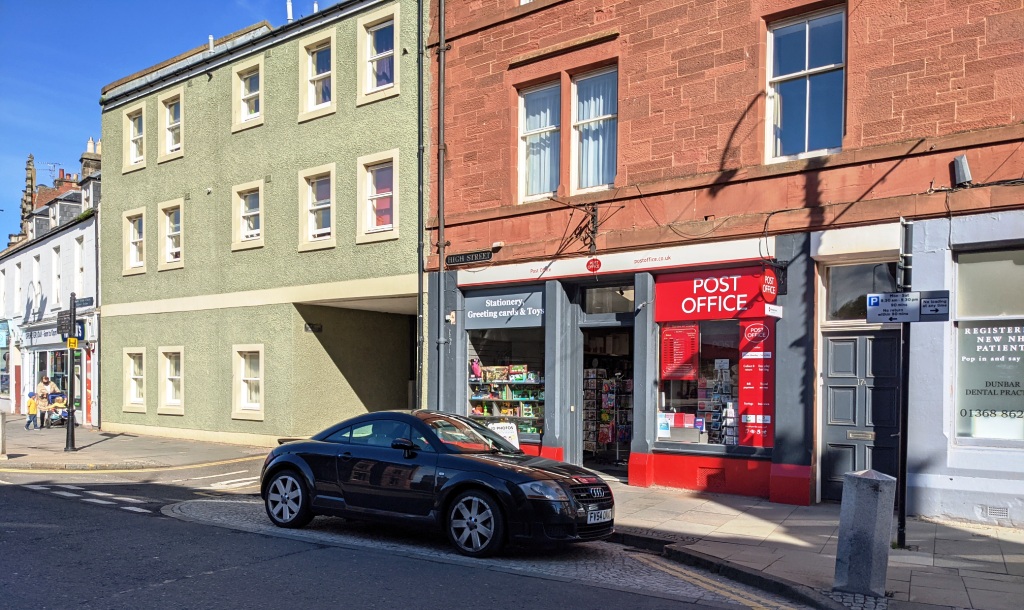
The view today is somewhat different, with the Post Office now where the garage offices used to be and the flats next door replacing the old building above the garage. The present Post Office replaced the old one across the road and the Old Post Office building is now Hector’s restaurant.
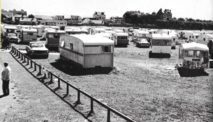
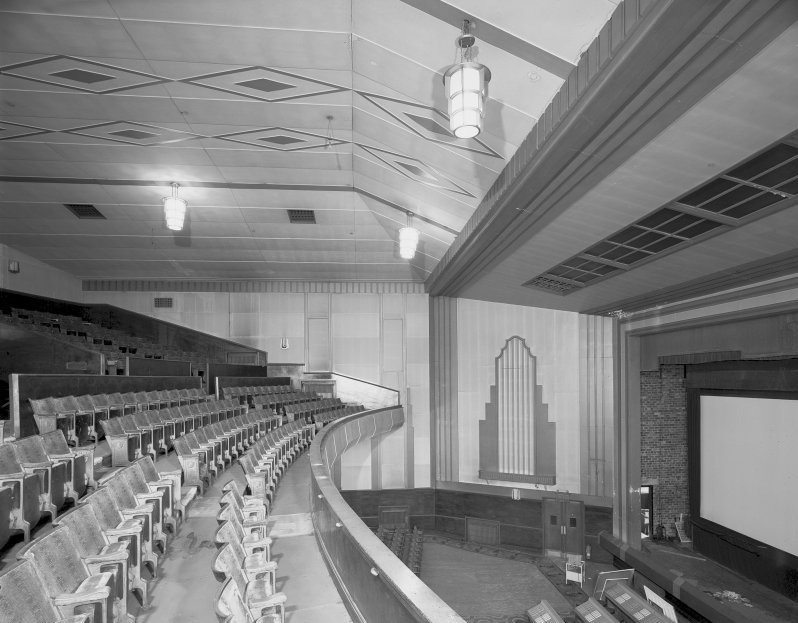
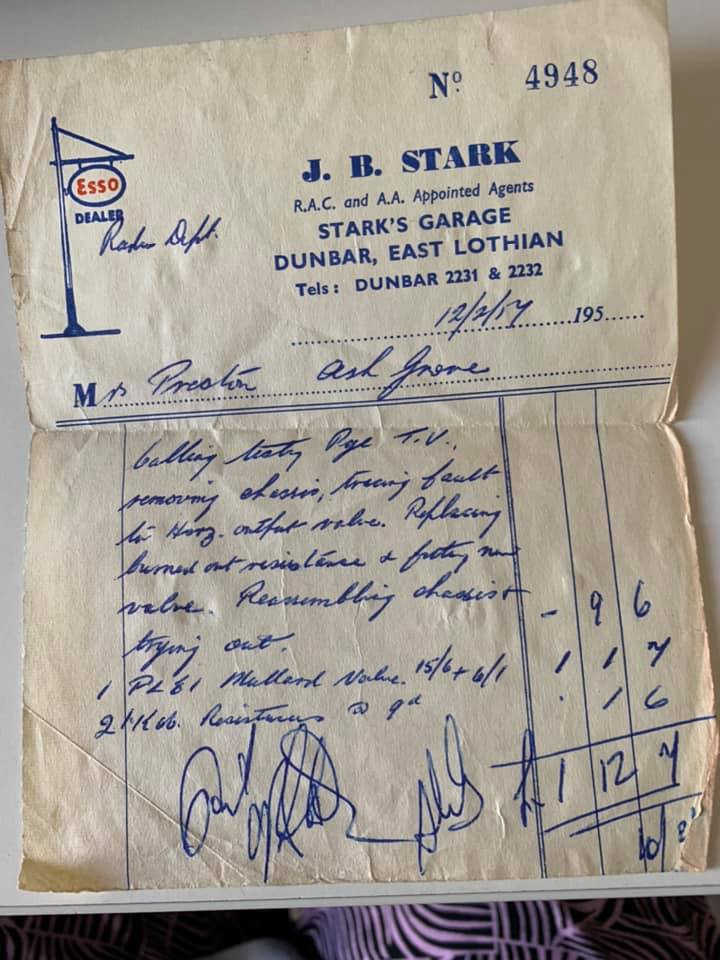
You must be logged in to post a comment.